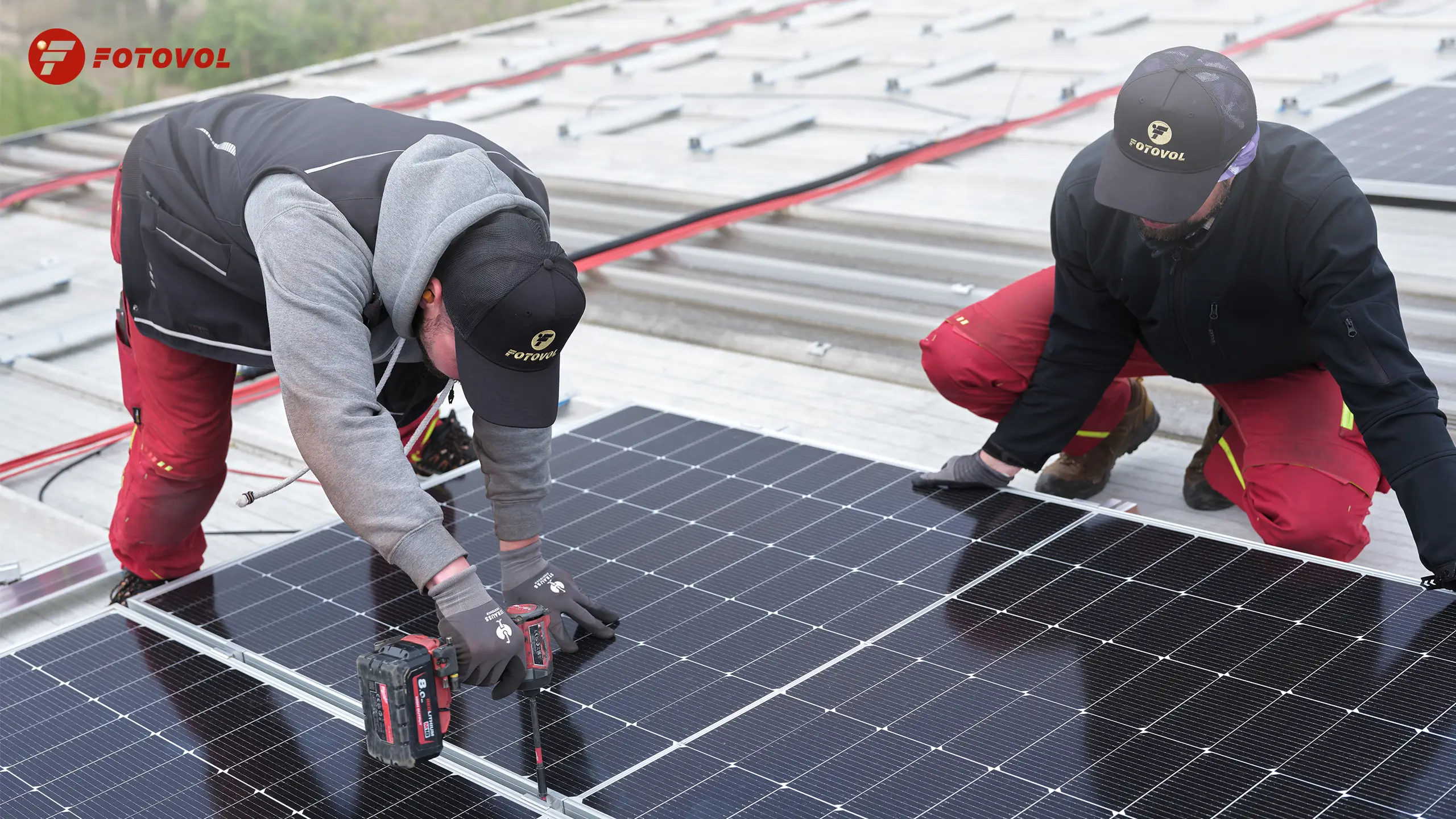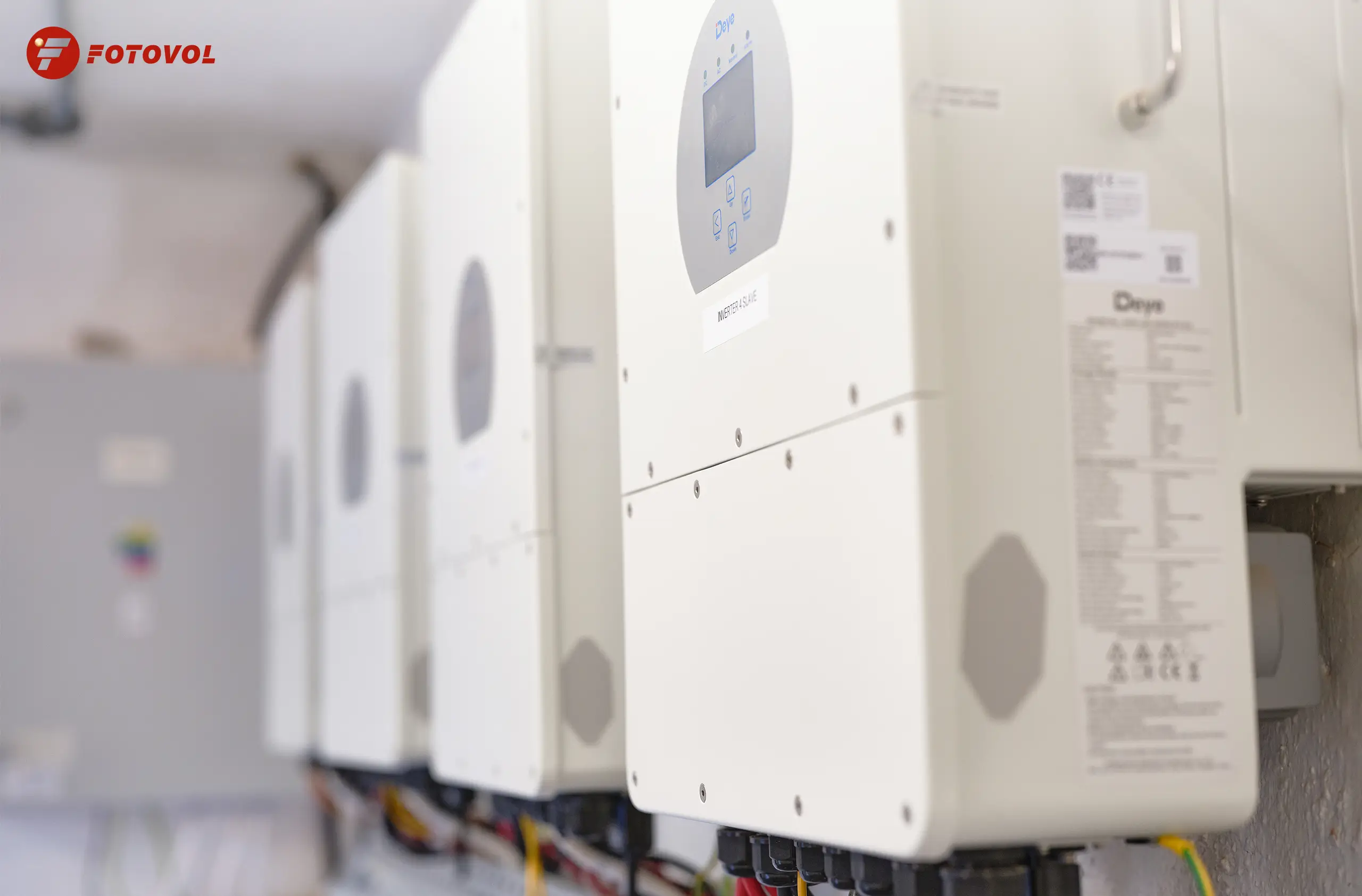How to prepare for the installation of a photovoltaic system
Are you thinking about installing photovoltaics?
How to prepare your house for as few interventions as possible?
Preparing for the installation of a photovoltaic system when designing a new house/buidling is easiest because you can incorporate it from the beginning. However a solar system can also be installed in older homes with ease if you follow a few basic steps.
1 : Where to place the solar panels:
The roof of a house or other structure is usually the best option. Provided it has sufficient space and is orientated to effectively capture sunlight.
2. Technical room or other suitable place for the voltage converter:
If you also decide to use battery storage, make sure you have a suitable place to install it with the inverter. The room should be dry, well-ventilated, and accessible.
3. Electrical installation:
Connecting the photovoltaic system components. This includes connecting the system to the distribution board, modifying the meter box, and ensuring proper grounding.
Installing photovoltaic systems - can I do it myself?
We do not recommend it. However, if you have electrotechnical skills, you can install a small photovoltaic system, suitable for a caravan, campervan or small garden shed, yourself. Such a system should have a voltage of up to 12 V and only require one or two photovoltaic panels, a battery, an inverter, a regulator and a sunny sky.
Higher voltage photovoltaic systems require professional assessment and should not be installed by someone without the proper knowledge. It is essential to calculate whether the roof can support the weight of the panels, provide project documentation and obtain approval from the distribution network. It is always better to leave such a photovoltaic system project to the professionals in order to avoid problems and potential financial losses caused by a poor and unprofessional installation.

Here is an overview of the cabling and grounding requirements for a photovoltaic system installation:
Conduits and cables
A connection under the roof area to the location of the PV technology (inverter/battery):
Ø 32-50 mm cable protector:
It is used to route cables through the roof space in the case of attic living.
This conduit is suitable for routing cables such as:
2x string cables (for connecting panels)
4x6 mm² solar cables (for power transmission)
16 mm² grounding cable (for the safe grounding of photovoltaics)
A connection from the technical room to the house switchboard:
For smaller photovoltaic power plants:
5x2.5 mm² cables (for system connection)
FTP cable (for measurement and smart meter)
For larger photovoltaic power plants:
5x4 mm² to 5x6 mm² cables (for system connection)
FTP cable (for measurement and smart meter)
For battery systems:
2x (5x6 mm² cables) (for connecting the batteries)
FTP cable (for measurement and smart meter)
For older houses:
The solution is to use slats or conduits on the facade or interior of the house.
Grounding of the photovoltaic power plant
Every photovoltaic power plant must be properly grounded, including the roof section and other components.
If there is no main earth terminal (HUS) in the house:
With a lightning rod - The ground must be connected to the HUS in the ground..
Without a lightning rod - An earthing system must be dug, either with the help of an earthing plate or earthing rods, and create a HUS with values up to 10 Ω.
How many photovoltaic panels will I need for my roof
The number of photovoltaic panels needed on a roof is very individual and depends on many factors. It is therefore necessary to make an accurate calculation in order to make the system as profitable as possible. Most regular family homes can often have between 12 and 20 panels on the roof.
Solar panel size
The majority of solar panels on the market are approximately 2 x 1 m in size or have an area of 2m². Panels with an average power output need approximately 5 or 6 m² of area to produce 1 kWp of power.
How to prepare a house for the installation of photovoltaics:
If you are planning to install a photovoltaic array, it is essential to thoroughly prepare the construction conditions so that the entire process runs smoothly. We will help you with this and review all the conditions before installation.
Here is an overview of a few points you should consider:
1. The carrying (load) capacity of the roof:
A pitched roof must have a load capacity of at least 25 kg/m².
For a flat roof, depending on the load, at least 40 kg/m².
2. Roof orientation:
South is best, southeast and southwest orientations are also excellent. If necessary the west and east sides of the roof can also be used.
3. Required space:
You can also place photovoltaic panels on other buildings such as garages, barns, etc. If you want to receive a Green household subsidy, all the buildings you want to use must be registered in the real estate records.
4. Obstructions:
To avoid shadows and obstacles (e.g. dormers or chimneys), it is best to place these elements on the north side of the roof, where the photovoltaics are not installed.
5. Do I need any other construction modifications?
There is no need for any additional structures or construction on the roof before installation. No additional structural elements need to be installed in advance.
6. Repairing a roof before or after the installation of photovoltaics?
The expected lifespan of the roof should be at least 20-25 years. If the roof needs repair, it is better to do it before installing the solar panels. The roof should also last longer because the solar panels provide protection from the direct effects of the weather and the environment. But it is more practical to deal with repairs before an installation. If necessary, the solar panels can be removed for later repairs.
7. Where to place the voltage converter and battery storage?
Ideally, you should have a technical room in the house that will serve the photovoltaic power plant. This is where the inverter should be located and possibly the battery storage, if you decide to include them in your system. If you do not have such a room, a garage, hallway or cellar is also suitable.
- The room must be dust-free, dry and have a relatively stable temperature.
- The inverter needs approximately 0.6 × 0.4 meters (add another meter for the battery).
- The devices are mounted on the wall, which must be able to support the weight of the inverter, which can be as much as 60 kg.
In order to ensure problem-free conditions for the connection of the photovoltaic system to the distribution system, it is necessary to pay attention to the following steps:
Pre-preparation:
It is necessary to model a route for a UV protector or a metal conduit with a diameter of 30 to 50 mm between the panels and the technical room. This will serve to connect the photovoltaic system with the switchboard.
Electric meter box:
The cabinet must be prepared for two-tariff meters so that energy consumption and production can be properly monitored and evaluated..
Supply from the technical room:
The supply cable from the technical room to the main switchboard should be a CYKY-J 5x6 mm cable.
Grounding:
In order to ensure the safety and efficiency of the system it is necessary to prepare the appropriate grounding of the photovoltaic power plant according to applicable standards.
Switchboard for safe operation of photovoltaics:
The switchgear ensures that your photovoltaic system efficiently processes the energy produced according to your current needs. This means that the energy can either be consumed, stored, drawn from the battery, or sent as surplus to the grid. To ensure the smooth operation of the photovoltaic system, we create a new custom-made switchgear that ensures optimal functionality and system safety.

Self-sufficient household with photovoltaics:
If you want your household to be self-sufficient using photovoltaics, it is important to optimize the operation of appliances and the overall running of the household. At Fotovol s.r.o., we focus on ensuring that you feel a return on your investment in photovoltaics as soon as possible and to the maximum possible extent.
Therefore, we propose optimizing consumption.
We will adapt your home to make maximum use of the solar energy produced.
We can also design a solution for water heating or other specific needs.
Do you want to find out if photovoltaics is the right choice for you? Do you want to know more about photovoltaics for water heating?
Contact our experts and ask them any questions that came to your mind while reading this article.
Solar energy available to everyone!
Subscribe to our newsletter
Get the latest updates and exclusive offers straight to your inbox.
By clicking Subscribe, you agree to our terms and conditions.